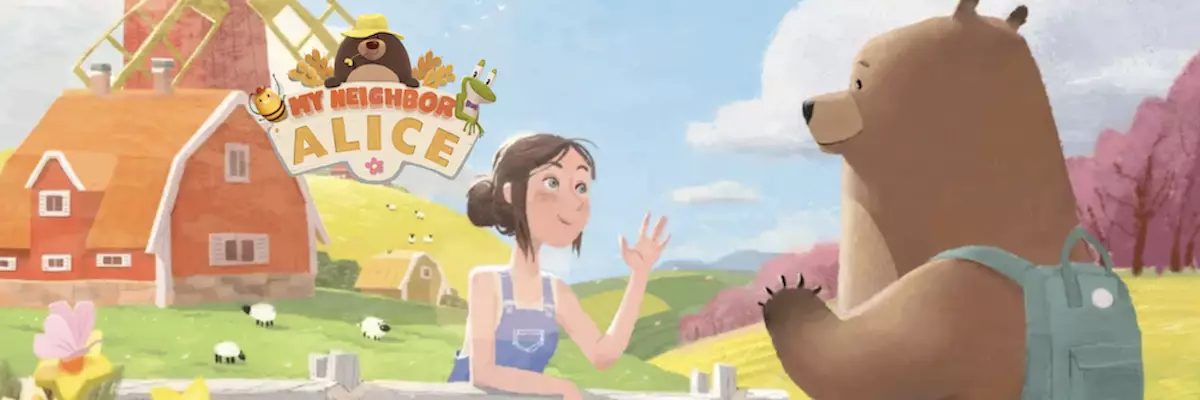Since its inception in 2021, My Neighbor Alice has rapidly established itself as a standout title within the expanding realm of blockchain gaming. Its rise to prominence was both swift and significant, culminating in accolades such as being named the Project of the Year by Binance Launchpool. This multiplayer 3D game distinguishes itself by being fully decentralized, offering an innovative twist on the play-to-earn (P2E) model that has captivated a diverse audience. By integrating social simulation, staking mechanics, and world-building elements, My Neighbor Alice has created a fresh digital ecosystem for gaming enthusiasts.
Visually, My Neighbor Alice draws inspiration from beloved franchises, such as Nintendo’s Animal Crossing, characterized by its vibrant, cartoon-like graphics. This aesthetic choice is not merely for show; it reflects a deliberate design aimed at attracting a broad demographic. Players are invited into the colorful world of Lummelunda, where they can buy land plots, personalize their spaces with a multitude of buildings and flora, and forge lasting community ties. The mechanics are straightforward yet engaging, urging players to invest in their virtual real estate and participate in a rewarding gameplay loop.
What sets My Neighbor Alice apart from other titles is its robust use of technology. Built on ChromaWay’s Chromia blockchain, the game has recently launched its mainnet, unlocking various new features and technical advancements to enrich the player experience. Though still in Beta Season 2, the game has introduced various quirks that keep players engaged. Among the most anticipated features is the upcoming user-generated content (UGC) toolkit, which will allow players to create and contribute content to the game without needing coding skills.
My Neighbor Alice’s vibrant ecosystem is fundamentally anchored in its player-driven economy. Players, referred to as Neighbors, create avatars that allow them to interact with the game world. They can partake in diverse activities that range from farming to fishing, contributing to both their own progress and the community at large. Central to this economy is the primary currency known as $ALICE, which facilitates in-game transactions, rewards players, and grants them governance rights within the game’s decentralized autonomous organization (DAO). This governance structure empowers players by allowing them to participate in crucial decisions regarding future upgrades and developments.
In addition to $ALICE, the game has introduced a secondary token, $BJORN, which enriches the economic landscape. Currently in a testing phase, $BJORN can be earned through various in-game activities, providing dedicated players with additional incentives to engage with the world. This dual-token system reflects a sophisticated economic model designed to enhance the game’s appeal and longevity.
A pivotal aspect of My Neighbor Alice is its integration of non-fungible tokens (NFTs). In this virtual landscape, all in-game assets are tokenized, granting players true ownership of their digital items. From diverse plant species to various types of animals, these NFTs can be utilized to beautify players’ lands and can also be traded in a built-in marketplace. This feature effectively transforms gameplay elements into valuable assets, emphasizing the game’s core P2E philosophy.
Furthermore, the game incorporates a reputation system that rewards positive contributions, promoting a healthy and engaging environment. This aspect is particularly important, as it seeks to eliminate bots and enhance genuine interactions among players. The commitment to community engagement is further underscored by the inclusion of real-time translation services, enabling players from different linguistic backgrounds to communicate and collaborate.
What makes My Neighbor Alice compelling is its broad appeal. While the game caters to dedicated web3 gamers, it also actively seeks to attract players from traditional gaming backgrounds. Collaborations with mainstream brands, such as the renowned fashion magazine ELLE, signal a strategic intent to bridge the gap between the web2 and web3 gaming communities. Moreover, partnerships with popular NFT collections, like Pudgy Penguins, demonstrate an effort to embrace diverse gaming cultures and audiences.
Despite its success, potential barriers remain; most notably, the requirement to purchase land to fully engage with the game can deter some players. However, the availability of a free trial period offers an accessible gateway for curious newcomers, mitigating this barrier.
My Neighbor Alice stands at the forefront of the blockchain gaming revolution. Its charming visuals, engaging mechanics, and community-driven design make it an enticing option for a variety of players. While certain thrill-seekers may find its slower-paced mechanics less appealing, the game’s unique blend of social simulation and economic engagement is a novel invitation to experience a new dimension of gaming. With ongoing developments and an ever-expanding player community, My Neighbor Alice is certainly worth exploring.















Leave a Reply